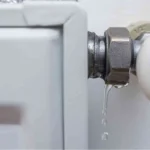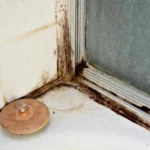What can I do? What should I do?!
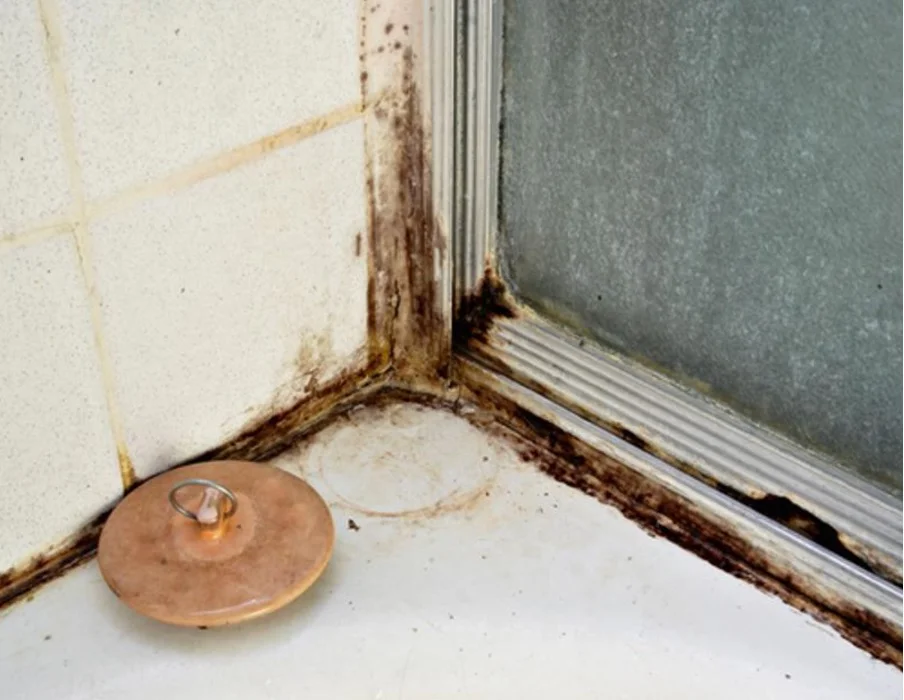

Plumber - Paul
Paul's a member of the Chartered Institute of Plumbing & Heating Engineers, Water Regs UK (formerley WRAS – Water Regulations Advsiory Scheme) certificated as well as a qualified unvented cylinder engineer and a qualified heat pump engineer.
Mould was here before we were on the planet. And it'll be here after us!
With showering, bathing, hand washing, teeth brushing, toilet flushing all going on in a day – it’s no wonder that bathrooms are damp, humid and the perfect place for mould to grow and take hold. If surfaces aren’t cleaned or dried properly, mold spores – microscopic organisms that float in the air will land and start to grow and multiply, turning into the fungus mildew. Where this isn’t dealt with quickly it’ll develop into mould!
You’ll often see aspergillus, cladosporium and penicillium in bathrooms – given away by their dark brown, green, blue, yellow and pink tints. Without a mould allergy these aren’t particularly dangerous but their colour and lack of camouflage ensures they’re something that you’ll want to be rid-off.
What is black mould? It’s the mould stachybotrys, that’s so dark that it’s almost black – hence the name black mould, that needs to be swiftly taken care off.
During your last cleaning session, notice a build-up of unsightly black gunk? Some unnerving thoughts may’ve crossed your mind at this point. “Do I have a case of black mould on my hands? Is it dangerous?? How do I get rid of it???”
How harmful is Black Mould?
Mouldy, damp environments can cause a host of medical problems. The most common are sneezing, coughing, wheezing, a scratchy throat, a runny nose, red eyes and skin rashes. Shortness of breath, headaches and nausea can be added to this list.
Moulds can also affect the immune system and trigger more serious problems including asthma attacks. And the mycotoxins produced by mould can result in mycotoxicosis, which can lead to long-term effects like early onset Parkinson’s disease, depression and certain types of cancers.
If you or a member of your family show signs of mould exposure symptoms, seeing a doctor or an allergist will confirm if there’s a black mould or other mould allergy and help deal with it.
Who’s most vulnerable? Can black mould kill you?
You don’t need to touch mould for it to affect your health. When you see it, you can be sure that mould spores are in the air you’re breathing. And if these get into your lungs, a host health issues throughout your body are possible. And in extreme cases black mould can kill.
The young – babies and young children not least due to their small airways are at particular risk along with the elderly. Also, people with respiratory conditions, e.g. asthma and certain allergies tend to be more and worse affected, together with those with eczema and other skin conditions. If you’ve a weakened immune system say following chemotherapy, recently had flue, measles or glandular fever (mononucleosis) or simply have a poor diet – lung fungal infections are a real danger. Not to be missed out – smoking and vaping and the damage these cause to lungs will also make you more at risk and susceptible to moulds and the health problems they lead to.
So, how can I prevent mould in the bathroom?
Whether you’re a homeowner or a renter, battling bathroom mould is a must if you want to keep the room clean, healthy and safe.
All bathrooms naturally accumulate moisture, but drying out the space will help prevent mould from appearing or slow its growth if it’s already there.
Black mould if extreme and taken hold may require removal by a professional to ensure the bathroom’s completely clear of mould spores. For most homes though this won’t be needed if you take some simple measures.
Ventilation – leave the bathroom window open
Fresh air and clean surfaces are the enemies of fungus spores. Ensure you open windows and wipe around the shower regularly. It might be a surprise to hear, but fungus spores are everywhere. They are indoors and outdoors, floating around and waiting for a suitable environment to land in and take root. When you open your bathroom window after a bath or shower, you take away the spores’ chance to land and grow. And after showering, always leave the shower curtain and bathroom door open. This will help to dry the room up faster getting rid of moisture.
Wet towels – don’t leaving them on the floor
Mould can start to multiply, in some cases within 24 hours, depending on the bathroom conditions. This means that wet towels left on the floor can be a breeding ground for mould. So, make sure that they’re hung up and dried properly.
Bathroom extractor fan leave it running and dehumidify
A bathroom fan has two functions, removal of odours from the room, and the removal of moisture from the air. If your bathroom doesn’t have a window, leaving the fan on after use will help to remove any mould spores that have been released. And if you have one, run a dehumidifier (sachets or ceramic boxes filled with salt attracting and capturing moisture from the air) to keep your home’s humidity below 50 percent.
Leave those bathroom lights on!
Keep your bathroom well-lit will help to prevent mould from growing in dark, damp areas. A cost-effective way of doing this is to have your lights put onto a timer or linked to a bathroom fan or extractor fan.
Shower/bath essentials put on a soap dish or on storage rack
Have you noticed that soap and shower body wash start to get scummy when you leave them on the bath side? The soap and moisture create the perfect environment for spores to flourish and take hold. Using a soap dish and shower rack will reduce the chance for mould to establish itself and grow. Also, remember to hang up loofas, flannels and scrubbing brushes so that they dry quickly.
Get mildew-resistant shower curtains, curtain liners, and bathmats
Shower curtains, curtain liners, and bathmats are all potentially perfect breeding grounds for mildew and moulds. You might also find mould on the walls of the bathroom. Mildew resistant curtains and bathmats can be bought on the high street or on-line will help in slowing down the spread of mould. Regular washing of these will also help to keep you mould free.
Use rinse-free formulas
A rinse-free formula is a product that doesn’t require any further cleaning. All you have to do is spray the cleaner at the end of your shower and leave it to work. Pretty much an effort free way to keep mould and mildew at bay.
Watch out for lying water and leaks
Ensure that you don’t have pools of still or stagnant water. These are perfect breading grounds for mildew and mould. Make sure that you do everything you can to stop fungus lurking in nooks between tile or deep in corners. Also, include a routine pipe-check under the sink and bath as part of your surface/tile/floor cleaning regime and fix any slow leaks you find immediately so that you avoid pooling water and a home for new colonies.
Purifying plants – put them in your bathroom
If plants are your thing, there’s an easy way to get rid of fungus spores in your bathroom. Purifying plants such as the spider plant, Chinese evergreen bamboo, snake plants, philodendron varieties, and dracaena varieties all remove mould spores from the air.
There are also house plants that reduce humidity and can help break down existing mould and stop it coming back making them a good investment.
- English ivy is a great choice for smaller bathrooms, as it removes airborne mould from humid spaces. It’s best placed on top of a cabinet or in a hanging pot if you’ve not much room.
- Peace lily needs very little sunlight and are excellent purifiers. They’re a particularly good choice for windowless bathrooms but need to be kept out of the reach of pets as they’re toxic for animals.
- Reed palms are great for reducing humidity in your bathroom by absorbing moisture through their leaves. Also, unlike other palms, they’re fine in low light making them a good choice for indoors.
- Boston fern is an attractive, evergreen plant that does well in indirect sunlight and moist soil making it another good choice for reducing bathroom humidity.
- Tillandsia does well in direct sunlight so needs a bright window to get on with absorbing moisture through their leaves and reducing your bathroom’s humidity.
A hygrometer will show you whether you have enough of the right plants to keep the optimum air humidity at less than 50 per cent and when this is exceeded.
Use a mildew wash and anti-mould paint
If you want to defend against mould in the bathroom, use a mildew wash and anti-mould condensation paint. These seal surfaces and adds a layer of protection against moisture in bathrooms. They’re easy to apply and maintain and are scrubbable.
Can I paint over bathroom mildew or mould? The answer is no, and you’ll need to roll-up your sleeves and deal with the mildew and mould first. Unless you kill the roots of the bathroom fungus, it’ll continue to grow through the paint and reappear on your newly painted bathroom walls. Unfortunately, painting over the mould is simply not a solution.
And how do I get rid of black mould?
Can I remove black mould from walls and ceilings myself? Yes. If your mould infestation is mild, there are a few things you can do to help get rid of it. Make sure that you dress appropriately and of course test any mould removal substances on a small area of your surface first to avoid ruining the material.
Put on protective equipment!
If you’re going to remove mould on your own, make sure you wear suitable clothes and have the right equipment – waterproof gloves and a mask etc. Mould spores are dangerous and if you’ve a respiratory illness such as severe allergies, asthma, or COPD, avoid doing this yourself.
Tips and tricks to get rid of black mould
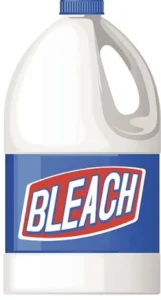
Bleach – your first stop
If the mould hasn’t taken hold i.e., begun to destroy anything and it’s just on the surface, scrubbing with a mixture of bleach and water is a great way to remove it.
With a large cap full of bleach mixed into 4 litres of water and using some elbow grease – you’ll kill the mould spores and have disinfected surfaces.
If you use off-the-shelf mould removal products, follow the instructions on the packaging and the mould should come off easily.
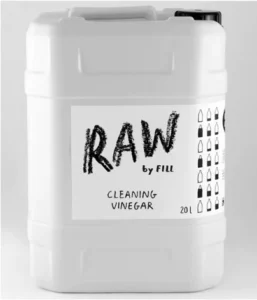
Vinegar – good with chips and great for mould!
If you prefer, make your own cleaner with something you already have on your kitchen shelves – white wine vinegar. It’s a perfect all-purpose cleaner and ideal for killing any mould or mildew you may not even be able to see. To do this white vinegar mixed half and half with water is natural way to kill mould, of course scrubbing is required. Or you can spray the vinegar directly on the surface. Let the mixture kill the mould, then scrub the surface.
Btw you’ll probably prefer the milder, sweet flavour of malt vinegar over its white wine cousin with fish and chips. It better balances with the saltiness and its acid cuts more gently through the crispy, fried texture.
If bleach or vinegar…. isn’t enough?
If you’ve tried bleach, vinegar, plants, improving ventilation, dehumidifying etc. etc. and the mould still doesn’t budge, or it keeps coming back – it’s time to call the professionals. They’ll have the chemicals and fungicides needed to get you mould free.
Wrapping up....
If there’s one thing you take-away from this blog, it’s that mould and black mould in particular is a serious problem that can easily penetrate deeper into your home than you realise. And this is why it needs to be got rid of as soon as it’s noticed. Better still, take the preventative steps and black mould and all its health issues and consequences will never be a problem you’ll have to deal with.
See you soon....
That’s it for today! Until next time, you can always find us on www.angusplumbing.co.uk (we’ve a great on-line booking mechanism) or on Instagram, Facebook and YouTube. Or, if you wanted to, you can call, text or WhatsApp us on 07442 966664.
We’d love to hear from you, especially if there’s something, you’d like us to blog about.
All the best for now
The ANGUSplumbing team






